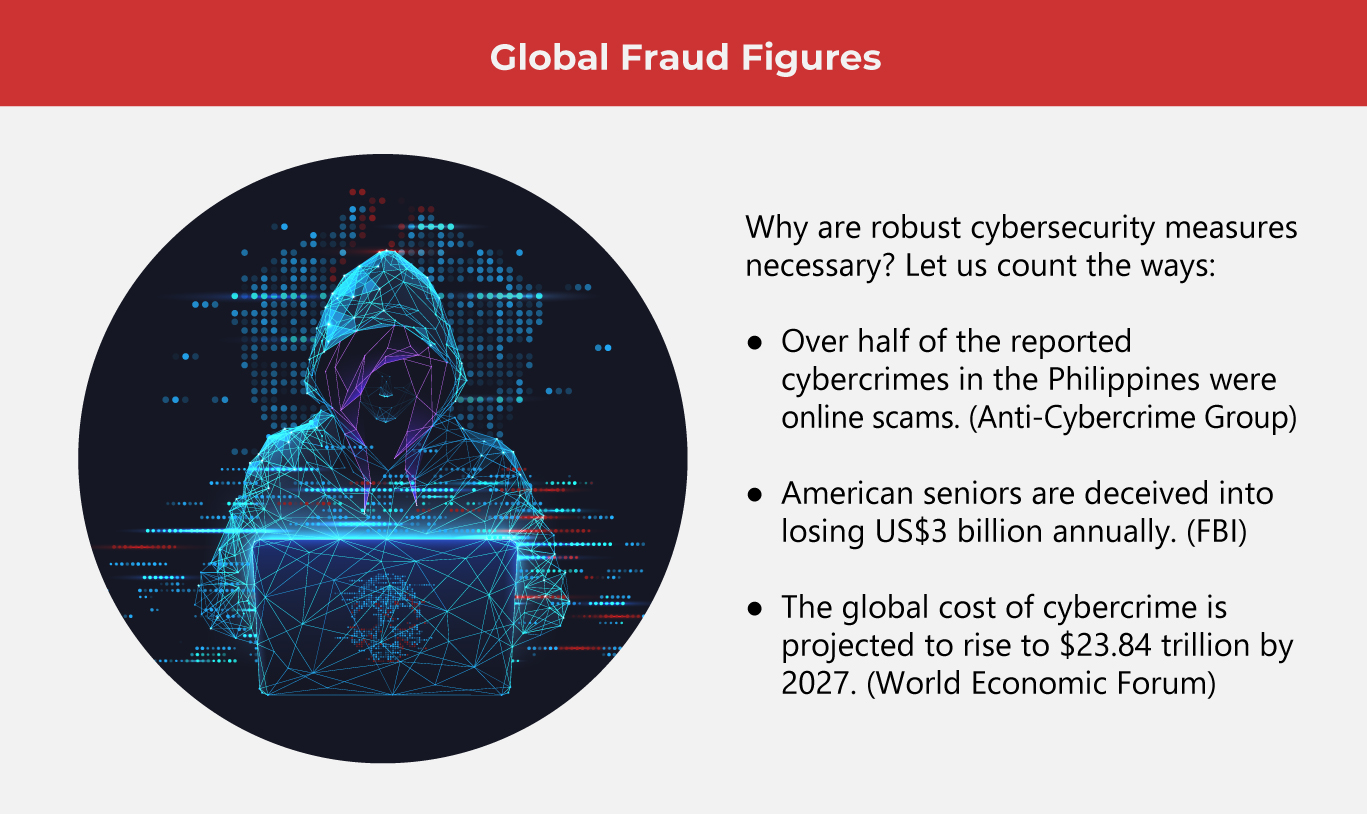Top 5 Benefits of Using Behavioral Biometrics for Your Biz

According to a recent report, the behavioral biometrics market, valued at US$1.8 billion, may peak at US$12.68 billion by 2031. This performance marks an impressive compound annual growth rate (CAGR) of over 27% from 2024 to 2031.
Who's driving this growth? The report reveals that big enterprises led the market in 2023. In particular, the BFSI (banking, financial services, and insurance) industries are leveraging behavioral biometrics to create advanced identification measures that prevent fraud and boost transaction security.
Other reasons for this technology's growing demand are:
-
Growing dependence on smartphones
With an increasing number of people using smartphones for a wide variety of activities—from banking and social media to shopping and messaging—mobile applications have increased to address these needs. However, this surge in app usage has also opened users up to cyber risks.
-
Insufficiency of usual authentication practices
Traditional authentication methods, such as passwords and PINs, have become susceptible to breaches and user errors. Additionally, these measures rely heavily on users maintaining secure practices, which is not always reliable.
-
The rise of artificial intelligence (AI)
AI algorithms can process vast amounts of behavioral data, accurately identifying unique patterns and anomalies. This allows for more effective and adaptive authentication methods, which behavioral biometrics offers.
-
Government support
Government funding and research programs are crucial for advancing the development and implementation of behavioral biometrics. Additionally, government-backed programs often set standards and regulations, fostering wider adoption.
-
The Russia-Ukraine conflict
Geopolitical tensions have intensified security concerns, driving interest in advanced security measures like behavioral biometrics. Organizations and governments are more focused on enhancing security protocols to protect sensitive information and infrastructure.
What is behavioral biometrics?
Behavioral biometrics differs largely from physiological biometrics, which measures physical characteristics like fingerprints, facial structure, and hand geometry. Meanwhile, behavioral biometrics study human behavioral patterns via machine learning. By analyzing your distinctive patterns as you physically engage with your devices, the system can gauge if the activity is human-driven or part of an automated threat.
Here are some of the behavioral elements it evaluates:
-
Typing pattern analysis
Keystroke analysis examines your typing style and speed when using a device. It also identifies your unique habits, such as the pressure applied while typing.
-
Gait recognition
Behavioral biometrics studies an individual's walking style, including stride length, speed, and the rhythm of their steps. Advanced algorithms process this data to create a distinct profile for each individual based on their gait.
-
Patterns in scrolling and swiping
Users interact with touchscreens in their own ways, having unique swipe speeds, directions, pressures, and scrolling rhythms.
-
Phone orientation
Behavioral biometrics notes a user's preferred phone angle or the specific way they hold their devices. This involves measuring the orientation and tilt of the phone during use and how these angles change in different contexts.
Unlike other verification methods that require the user's active input, this type subtly captures your movement and actions. The technology operates unobtrusively, constantly observing your behavior, so that when you try to log in, it can recognize you based on your movements.
Benefits of implementing behavioral biometrics
This technology offers several benefits, particularly improving security while reducing costs associated with fraud. Here are some of its key advantages:
-
Continuous authentication
Instead of verifying identity only at login, behavioral biometrics continuously authenticate throughout a session. They keep track of thousands of behavioral parameters, helping the system stay efficient even as scammers modify their strategies.
-
Real-time security
Because behavioral biometrics operate in real-time, they can identify and counter potential fraud while it's happening. This allows faster intervention, such as blocking transactions, alerting users, or notifying security teams.
-
Better customer experiences
This technology can authenticate users by analyzing unique user behaviors without requiring additional steps like entering passwords or answering security questions. This streamlines the login process and reduces friction and frustration, making interactions with digital platforms more convenient and user-friendly.
-
Cost savings
By preventing fraud, businesses can save on the costs associated with chargebacks, refunds, and the loss of goods or services. Additionally, behavioral biometrics reduces the need for manual intervention, freeing up resources for other tasks.
-
Enhanced reputation
By protecting customer accounts and data, businesses can build and maintain customer trust. Offering state-of-the-art security measures can differentiate a company from its competitors, making it more attractive to security-conscious customers.
-
Adaptive learning
These systems can learn and adapt over time, becoming more accurate as they gather more user behavior data. They are incorporated into different platforms and applications, offering a versatile security solution that can expand alongside business growth.
Challenges of using behavioral biometrics
However, there have been concerns about these aspects of the technology:
-
Privacy issues
Collecting detailed data about users' behaviors raises privacy concerns, as people may be uncomfortable with their data being tracked and stored. Businesses must also ensure they comply with data protection regulations, which impose strict requirements on data handling, storage, and user consent.
-
Accuracy
There can still be cases where legitimate users are incorrectly flagged as suspicious (false positives) or fraudsters are not detected (false negatives). User behavior can vary due to different circumstances, such as a change in device, environment, or even mood.
-
User acceptance
Some users may perceive behavioral biometrics as invasive, leading to discomfort or resistance to its adoption. Educating users and obtaining their consent is crucial to gaining their trust and acceptance.
-
Cost and resource allocation
The system requires continuous monitoring, maintenance, and updates to stay effective against new and evolving threats. This demands ongoing investment and resources.
Conclusion
Behavioral biometrics offers a sophisticated and user-friendly solution for enhancing security across various digital platforms. As technology advances and cyber threats evolve, adopting behavioral biometrics will continue to grow, offering businesses and individuals a reliable and efficient way to protect sensitive information. As one of the Top 20 EMS companies in the world, IMI has over 40 years of experience in providing electronics manufacturing and technology solutions.
As one of the Top 20 EMS companies in the world, IMI has over 40 years of experience in providing electronics manufacturing and technology solutions.
We are ready to support your business on a global scale.
Our proven technical expertise, worldwide reach, and vast experience in high-growth and emerging markets make us the ideal global manufacturing solutions partner.
Let's work together to build our future today.
Other Blog



